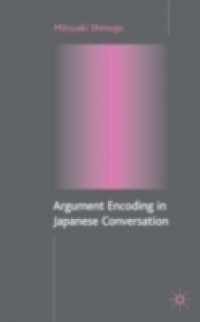Japanese is well known for its array of argument encoding types - but how is speakers' choice of encoding types to be described? With quantitative and qualitative analyses of a bank of conversation data this book takes a discourse analytic approach in investigating speakers' use of six major argument encoding types in conversational Japanese. Shimojo attempts to explain Japanese argument encoding as a unified system, elucidating the dynamics of the system in terms of a variety of functional needs.He argues that the highly elaborate encoding array denotes mental processing instructions for the hearer and thus meets the needs of spoken language, where the cognitive constraints in spoken communication welcome simplification of the hearer's tasks for comprehension.

